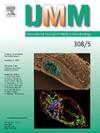塞拉利昂农村人口中金黄色葡萄球菌的鼻咽携带。
IF 3.6
3区 医学
Q1 MICROBIOLOGY
引用次数: 0
摘要
背景:鼻咽部金黄色葡萄球菌定植是继发感染的危险因素。因此,当缺乏临床分离株的数据时,定植分离株可以提供有关毒力因素和抗菌素耐药性的重要信息。本研究的目的是评估塞拉利昂农村金黄色葡萄球菌的定植率、耐药性模式和选定的毒力因子。方法:在塞拉利昂马桑加随机选择房屋的居民进行横断面研究(8-11/2023)。使用选择性培养基对参与者进行鼻咽金黄色葡萄球菌定植检测。在标准化问卷中记录了殖民化的危险因素。对分离株进行基因分型,并检测其抗菌敏感性和选定的毒力因子(如潘通-瓦伦丁白细胞介素、荚膜型)。结果:在300名参与者中(62.7 %女性,中位年龄:16岁),168名(56 %)被金黄色葡萄球菌相关复合物定植;6名参与者携带两种不同的金黄色葡萄球菌基因型,导致总数为174株。耐药以青霉素为主(97.1 %,169/174),其次为四环素(66.1 %,115/174)、复方新诺明(56.9 %,99/174)和oxacillin(24.1 %,42/174),均为meca阳性,多与ST8/ pvl阴性相关。PVL基因检出率为21.3% %(37/174),主要与ST15和ST152相关。除既往使用抗微生物药物(p = 0.019)外,没有特定的危险因素,如合共病,包括血红蛋白变异,与金黄色葡萄球菌鼻咽定植相关。结论:塞拉利昂农村无症状感染者中耐甲氧西林和pvl阳性甲氧西林敏感金黄色葡萄球菌(MRSA/MSSA)的流行率较高。需要采取措施遏制耐甲氧西林金黄色葡萄球菌在社区中的传播。本文章由计算机程序翻译,如有差异,请以英文原文为准。
Nasopharyngeal carriage of Staphylococcus aureus in a rural population, Sierra Leone
Background
Nasopharyngeal colonization with Staphylococcus aureus is a risk factor for subsequent infection. Isolates from colonization can therefore provide important information on virulence factors and antimicrobial resistance when data from clinical isolates are lacking. The aim of this study was to assess colonization rates, resistance patterns and selected virulence factors of S. aureus from rural Sierra Leone.
Methods
Residents of randomly selected houses in Masanga, Sierra Leone were included in a cross-sectional study (8–11/2023). Participants were tested for nasopharyngeal S. aureus colonization using selective culture media. Risk factors for colonization were documented in a standardized questionnaire. Isolates were genotyped and tested for antimicrobial susceptibility and selected virulence factors (e.g. Panton-Valentine leukocidin, capsular types).
Results
Of 300 participants (62.7 % females, median age: 16 years), 168 (56 %) were colonized with S. aureus-related complex; six participants carried two different S. aureus genotypes, resulting in a total number of 174 isolates. Resistance to penicillin was predominant (97.1 %, 169/174), followed by tetracycline (66.1 %, 115/174), co-trimoxazole (56.9 %, 99/174) and oxacillin (24.1 %, 42/174, all mecA-positive, mostly associated with ST8/PVL-negative). PVL gene was detected in 21.3 % of isolates (37/174) mainly associated with ST15 and ST152. Except for past use of antimicrobials (p = 0.019), no specific risk factors such as comorbidities including hemoglobin variants were associated with S. aureus nasopharyngeal colonization.
Conclusion
The prevalence of methicillin-resistant and PVL-positive methicillin-susceptible S. aureus (MRSA/MSSA) is high in a rural community of asymptomatic carriers in Sierra Leone. Measures to contain the spread of MRSA, also in the community, are needed.
求助全文
通过发布文献求助,成功后即可免费获取论文全文。
去求助
来源期刊
CiteScore
9.70
自引率
0.00%
发文量
18
审稿时长
45 days
期刊介绍:
Pathogen genome sequencing projects have provided a wealth of data that need to be set in context to pathogenicity and the outcome of infections. In addition, the interplay between a pathogen and its host cell has become increasingly important to understand and interfere with diseases caused by microbial pathogens. IJMM meets these needs by focussing on genome and proteome analyses, studies dealing with the molecular mechanisms of pathogenicity and the evolution of pathogenic agents, the interactions between pathogens and host cells ("cellular microbiology"), and molecular epidemiology. To help the reader keeping up with the rapidly evolving new findings in the field of medical microbiology, IJMM publishes original articles, case studies and topical, state-of-the-art mini-reviews in a well balanced fashion. All articles are strictly peer-reviewed. Important topics are reinforced by 2 special issues per year dedicated to a particular theme. Finally, at irregular intervals, current opinions on recent or future developments in medical microbiology are presented in an editorial section.

 求助内容:
求助内容: 应助结果提醒方式:
应助结果提醒方式:


